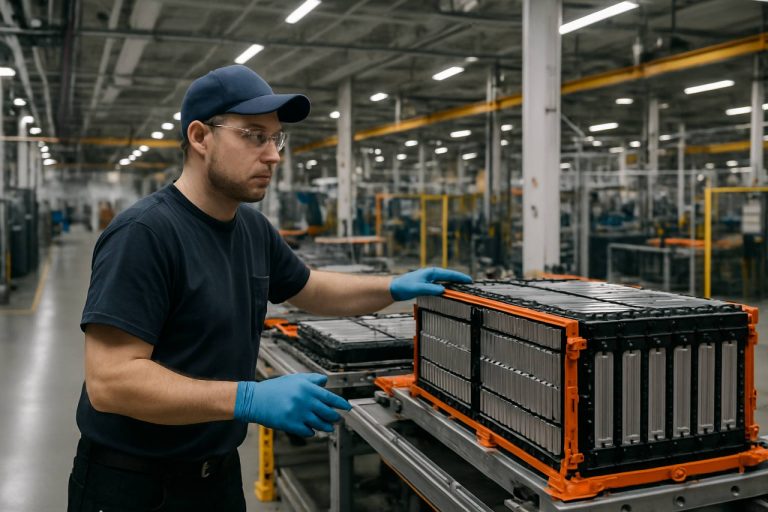
Xylanase Enzyme Biotechnology Industry Report 2025: Market Dynamics, Technology Innovations, and Strategic Forecasts to 2030. Explore Key Growth Drivers, Regional Trends, and Competitive Insights Shaping the Future.
- Executive Summary and Market Overview
- Key Technology Trends in Xylanase Enzyme Biotechnology
- Competitive Landscape and Leading Players
- Market Growth Forecasts and CAGR Analysis (2025–2030)
- Regional Market Analysis and Emerging Hotspots
- Future Outlook: Innovations and Strategic Opportunities
- Challenges, Risks, and Market Opportunities
- Sources & References
Executive Summary and Market Overview
Xylanase enzyme biotechnology refers to the development, production, and application of xylanase enzymes—biocatalysts that break down xylan, a major component of plant cell walls. These enzymes are pivotal in industries such as pulp and paper, food and beverage, animal feed, and biofuels, where they enhance process efficiency, product quality, and sustainability. The global xylanase enzyme market is experiencing robust growth, driven by increasing demand for eco-friendly industrial processes and the rising adoption of enzymatic solutions over traditional chemical methods.
In 2025, the xylanase enzyme biotechnology market is projected to continue its upward trajectory, building on a compound annual growth rate (CAGR) of approximately 7-8% observed in recent years. The market size was valued at over USD 500 million in 2023 and is expected to surpass USD 700 million by 2027, according to industry analyses from MarketsandMarkets and Grand View Research. This growth is underpinned by several key factors:
- Pulp and Paper Industry: Xylanases are increasingly used for pulp bleaching, reducing the need for harsh chemicals and lowering environmental impact. Regulatory pressures and sustainability goals are accelerating enzyme adoption in this sector.
- Food and Beverage: The use of xylanases in baking improves dough handling and bread quality, while in brewing, they enhance filtration and yield. Consumer demand for clean-label and high-quality products is driving enzyme utilization.
- Animal Feed: Xylanases improve nutrient availability and digestibility in feed, supporting livestock health and productivity. The trend toward sustainable animal agriculture is boosting demand for feed enzymes.
- Biofuels: Xylanases facilitate the breakdown of lignocellulosic biomass, making bioethanol production more efficient and cost-effective, aligning with global renewable energy targets.
Regionally, Asia-Pacific is emerging as the fastest-growing market, fueled by rapid industrialization, expanding food processing sectors, and supportive government policies. North America and Europe remain significant markets due to established industrial bases and stringent environmental regulations.
Key players such as Novozymes, DuPont, and AB Enzymes are investing in R&D to develop more efficient and robust xylanase variants, further propelling market innovation and competitiveness.
Key Technology Trends in Xylanase Enzyme Biotechnology
Xylanase enzyme biotechnology is experiencing rapid innovation, driven by advances in genetic engineering, process optimization, and application-specific enzyme tailoring. As of 2025, several key technology trends are shaping the landscape of xylanase production and utilization across industries such as pulp and paper, food and beverage, animal feed, and biofuels.
- Genetic Engineering and Strain Improvement: The use of recombinant DNA technology and CRISPR-based genome editing has enabled the development of microbial strains with enhanced xylanase yield, stability, and substrate specificity. Companies and research institutions are leveraging these tools to create xylanases that function efficiently under extreme pH and temperature conditions, broadening their industrial applicability. For example, Novozymes and DuPont are at the forefront of deploying genetically modified microorganisms for large-scale, cost-effective enzyme production.
- Enzyme Immobilization and Formulation: Advances in immobilization techniques—such as encapsulation, adsorption, and covalent binding—are improving the operational stability and reusability of xylanases. This is particularly significant for continuous processing in industries like bioethanol and paper manufacturing, where enzyme cost and process efficiency are critical. Recent studies highlight the use of novel carriers and nanomaterials to further enhance enzyme performance and shelf life (ScienceDirect).
- Metagenomics and Enzyme Discovery: The application of metagenomic approaches is accelerating the discovery of novel xylanases from diverse and extreme environments. By mining environmental DNA, researchers are identifying enzymes with unique properties, such as high thermostability or resistance to inhibitors, which are valuable for industrial processes (Nature Reviews Microbiology).
- Application-Specific Customization: There is a growing trend toward designing xylanases tailored for specific industrial applications. For instance, in the food industry, xylanases are being engineered to improve dough handling and bread quality, while in animal feed, they are optimized for enhanced digestibility and nutrient release (Cargill).
- Green and Sustainable Production: The push for sustainability is leading to the adoption of eco-friendly production methods, such as solid-state fermentation using agricultural waste substrates. This not only reduces production costs but also aligns with circular economy principles (Food and Agriculture Organization of the United Nations).
These technology trends are expected to drive further growth and diversification in the xylanase enzyme biotechnology sector through 2025 and beyond.
Competitive Landscape and Leading Players
The competitive landscape of the xylanase enzyme biotechnology market in 2025 is characterized by a mix of established multinational enzyme producers and innovative biotechnology firms, each leveraging advancements in genetic engineering, fermentation technology, and application-specific enzyme formulations. The market is moderately consolidated, with a handful of global players holding significant market shares, while regional and niche companies compete through specialization and cost-effective solutions.
Key industry leaders include Novozymes, DSM, DuPont (IFF), and AB Enzymes. These companies maintain their dominance through robust R&D pipelines, strategic partnerships, and a broad portfolio of xylanase products tailored for industries such as animal feed, pulp and paper, food and beverage, and biofuel production. For instance, Novozymes continues to invest in enzyme optimization for higher thermal stability and substrate specificity, addressing the evolving needs of industrial customers.
Emerging players and regional firms, such as Advanced Enzyme Technologies and Sunson Industry Group, are gaining traction by focusing on cost-competitive production, local market adaptation, and customized enzyme blends. These companies often collaborate with academic institutions and local distributors to accelerate product development and market penetration, particularly in Asia-Pacific and Latin America, where demand for xylanase in animal nutrition and food processing is rising rapidly.
- Strategic Initiatives: Leading players are increasingly engaging in mergers, acquisitions, and joint ventures to expand their technological capabilities and geographic reach. For example, DSM’s acquisition of specialty enzyme businesses has strengthened its position in the feed and food enzyme segments.
- Innovation Focus: Companies are prioritizing the development of xylanases with enhanced performance under extreme pH and temperature conditions, as well as enzymes compatible with sustainable and green processing methods.
- Regulatory Compliance: Adherence to international quality and safety standards, such as those set by the European Food Safety Authority (EFSA) and U.S. Food and Drug Administration (FDA), remains a key differentiator, especially for players targeting the food and feed sectors.
Overall, the competitive landscape in 2025 is shaped by technological innovation, strategic collaborations, and a growing emphasis on sustainability, with leading players leveraging their global scale and R&D strength to maintain a competitive edge in the evolving xylanase enzyme biotechnology market.
Market Growth Forecasts and CAGR Analysis (2025–2030)
The global xylanase enzyme biotechnology market is poised for robust growth between 2025 and 2030, driven by expanding applications in food & beverage, animal feed, pulp & paper, and biofuel industries. According to recent projections, the market is expected to register a compound annual growth rate (CAGR) of approximately 7.5% during this period, with the market value anticipated to surpass USD 800 million by 2030, up from an estimated USD 520 million in 2025. This growth trajectory is underpinned by increasing demand for sustainable and efficient biocatalysts, as well as regulatory shifts favoring eco-friendly industrial processes.
Key growth drivers include the rising adoption of xylanase enzymes in the baking industry to improve dough handling and bread quality, as well as in animal feed to enhance nutrient absorption and feed efficiency. The pulp and paper sector is also a significant contributor, leveraging xylanase for environmentally friendly bleaching processes that reduce chemical usage and effluent toxicity. Additionally, the biofuel industry’s focus on lignocellulosic biomass conversion is expected to further stimulate demand for advanced xylanase formulations.
Regionally, Asia-Pacific is projected to exhibit the fastest CAGR, exceeding 8% through 2030, fueled by rapid industrialization, expanding food processing sectors, and supportive government policies in countries such as China and India. North America and Europe will continue to be significant markets, driven by technological advancements and stringent environmental regulations encouraging the adoption of enzyme-based solutions.
Market analysts highlight that ongoing R&D investments and strategic collaborations among key players are likely to accelerate product innovation and market penetration. Companies such as Novozymes, DSM, and DuPont are at the forefront, focusing on developing high-performance, thermostable xylanase variants tailored for specific industrial applications.
Despite the optimistic outlook, the market faces challenges such as high production costs and the need for process optimization to ensure enzyme stability and activity under diverse operational conditions. Nevertheless, the overall market sentiment remains positive, with sustained growth expected as industries increasingly prioritize sustainability and operational efficiency.
For a detailed quantitative analysis and further market segmentation, refer to reports by MarketsandMarkets and Grand View Research.
Regional Market Analysis and Emerging Hotspots
The global xylanase enzyme biotechnology market is witnessing dynamic regional shifts, with emerging hotspots driven by industrial demand, technological advancements, and supportive regulatory frameworks. In 2025, Asia-Pacific continues to dominate the market, propelled by rapid industrialization, expanding food and beverage sectors, and a robust paper and pulp industry. China and India, in particular, are at the forefront due to their large-scale adoption of xylanase enzymes in animal feed, bakery, and biofuel production. According to Mordor Intelligence, Asia-Pacific accounted for over 35% of the global xylanase market share in 2024, a trend expected to persist through 2025.
North America remains a significant market, underpinned by advanced biotechnology infrastructure and strong R&D investments. The United States leads in the development of novel xylanase formulations for applications in food processing and bioenergy. The region also benefits from stringent environmental regulations that encourage the adoption of eco-friendly enzymatic solutions in industries such as pulp and paper. Grand View Research highlights that North American companies are increasingly collaborating with academic institutions to accelerate enzyme innovation and commercialization.
Europe is another key region, with Germany, France, and the Netherlands driving growth through sustainable manufacturing practices and a focus on reducing chemical usage in industrial processes. The European Union’s policies promoting green technologies and circular economy principles have spurred the uptake of xylanase enzymes, especially in the textile and animal feed sectors. MarketsandMarkets reports that the region’s market expansion is further supported by consumer demand for clean-label and high-fiber food products.
Emerging hotspots include Latin America and the Middle East & Africa, where the xylanase market is gaining traction due to growing agricultural industries and increasing awareness of enzyme benefits. Brazil and South Africa are notable for their investments in bioethanol and animal nutrition, leveraging xylanase enzymes to enhance process efficiency and product quality. These regions, while currently smaller in market size, are projected to exhibit above-average growth rates through 2025 as local industries modernize and global players expand their presence.
Overall, the regional landscape of xylanase enzyme biotechnology in 2025 is characterized by strong growth in Asia-Pacific, innovation-driven expansion in North America and Europe, and rapidly emerging opportunities in Latin America and Africa, reflecting a globally diversified and evolving market.
Future Outlook: Innovations and Strategic Opportunities
The future outlook for xylanase enzyme biotechnology in 2025 is shaped by a convergence of technological innovation, expanding application domains, and strategic industry collaborations. As industries seek sustainable and efficient solutions, xylanase enzymes are positioned at the forefront of biotechnological advancements, particularly in sectors such as food and beverage, animal feed, pulp and paper, and biofuels.
One of the most significant innovations anticipated in 2025 is the development of next-generation xylanases through protein engineering and directed evolution. These advanced enzymes are expected to exhibit enhanced thermostability, broader pH tolerance, and improved substrate specificity, enabling their use in more demanding industrial processes. For instance, the pulp and paper industry is investing in xylanases that can operate under extreme conditions, reducing the need for harsh chemicals and lowering environmental impact. Companies such as Novozymes and DuPont are at the forefront of these innovations, leveraging proprietary enzyme engineering platforms to deliver tailored solutions.
- Food and Beverage: The demand for clean-label and high-fiber products is driving the adoption of xylanase enzymes to improve dough handling, bread volume, and texture. Strategic partnerships between enzyme producers and food manufacturers are expected to accelerate the commercialization of novel xylanase formulations.
- Animal Feed: The push for improved feed efficiency and gut health in livestock is fostering the integration of xylanase enzymes into feed additives. Companies are exploring synergistic blends with other enzymes to maximize nutrient release and reduce feed costs, as highlighted by AB Vista.
- Biofuels: The bioenergy sector is poised to benefit from xylanase innovations that enhance the breakdown of lignocellulosic biomass, increasing the yield of fermentable sugars and improving the economics of second-generation biofuels. Collaborative research initiatives, such as those supported by IEA Bioenergy, are expected to drive further breakthroughs.
Strategically, the xylanase enzyme market is witnessing increased mergers, acquisitions, and licensing agreements as companies seek to expand their technology portfolios and global reach. The Asia-Pacific region, in particular, is emerging as a key growth hub due to rising industrialization and supportive regulatory frameworks. As sustainability and efficiency remain top priorities, the xylanase enzyme biotechnology sector is set for robust growth and transformative innovation in 2025 and beyond.
Challenges, Risks, and Market Opportunities
Xylanase enzyme biotechnology, a critical component in industries such as pulp and paper, animal feed, and biofuels, faces a dynamic landscape of challenges, risks, and market opportunities as it moves into 2025. The sector’s growth is propelled by increasing demand for sustainable and efficient industrial processes, yet it is tempered by technical, regulatory, and economic hurdles.
Challenges and Risks
- Production Costs and Yield Optimization: The high cost of enzyme production, particularly for industrial-scale applications, remains a significant barrier. Achieving high yields of thermostable and pH-tolerant xylanases through microbial fermentation or genetic engineering is technically complex and often requires substantial R&D investment. This can limit the adoption of xylanase solutions, especially in cost-sensitive markets such as animal feed and biofuels.
- Regulatory Compliance: The use of genetically modified organisms (GMOs) for xylanase production is subject to stringent regulatory scrutiny in many regions, including the EU and North America. Navigating these regulations can delay product launches and increase compliance costs, particularly as authorities update guidelines to address biosafety and environmental concerns (European Food Safety Authority).
- Enzyme Stability and Performance: Industrial processes often require xylanases that can withstand extreme temperatures, pH variations, and the presence of inhibitors. Developing robust enzyme variants that maintain activity under such conditions is a persistent technical challenge, impacting the reliability and efficiency of xylanase-based solutions (Novozymes).
Market Opportunities
- Green Chemistry and Sustainability: The global shift toward sustainable manufacturing is driving demand for eco-friendly enzymatic processes. Xylanases enable reduced chemical usage in pulp bleaching and improved digestibility in animal feed, aligning with environmental regulations and consumer preferences (Grand View Research).
- Emerging Applications: Innovations in enzyme engineering are opening new markets, such as biorefining, textile processing, and food & beverage, where xylanases can enhance product quality and process efficiency. The expansion of the biofuel sector, in particular, presents significant growth potential as xylanases facilitate the breakdown of lignocellulosic biomass (MarketsandMarkets).
- Strategic Partnerships and Licensing: Collaborations between enzyme producers, academic institutions, and end-users are accelerating innovation and commercialization. Licensing agreements and joint ventures are expected to play a pivotal role in overcoming technical barriers and expanding market reach in 2025.
In summary, while xylanase enzyme biotechnology faces notable challenges related to cost, regulation, and technical performance, the sector is well-positioned to capitalize on sustainability trends and emerging industrial applications, offering robust opportunities for growth in 2025 and beyond.
Sources & References
- MarketsandMarkets
- Grand View Research
- DuPont
- AB Enzymes
- Nature Reviews Microbiology
- Food and Agriculture Organization of the United Nations
- DSM
- Advanced Enzyme Technologies
- European Food Safety Authority (EFSA)
- Mordor Intelligence
- AB Vista
- IEA Bioenergy



